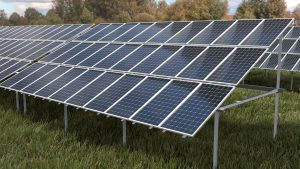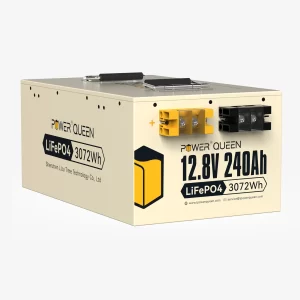The Ultimate Guide To Solar Energy
Solar Energy in New Brunswick
An interesting fact that most people find surprising is that the province of in New Brunswick receives on average 1142 kWh/kW/yr solar radiation per annum.
Renewable technologies have been making slow but steady inroads in New Brunswick and elsewhere.
New Brunswick has a small but growing solar infrastructure. The province has a history of solar hot water heating dating back to the 1970’s and 1980’s, and recent studies show that the majority of system owners are satisfied with them, reporting them to be not only low maintenance but also highly reliable.
Other Canadian provinces with climates similar to New Brunswick’s, such as Saskatchewan, Manitoba and Ontario most recently has commence cost-effective installations of solar hot water heating systems in their homes and businesses.
New Brunswick is one of several provinces that have created / gained access to Federal Solar Incentives
a.k.a Canada Greener Homes Grant – Homeowners can receive up to $5,000 to make energy efficient retrofits to their homes for measures such as new windows, insulation, battery energy storage systems and installing solar panels. Solar power systems can receive a rebate of $1.00/W up to $5,000.
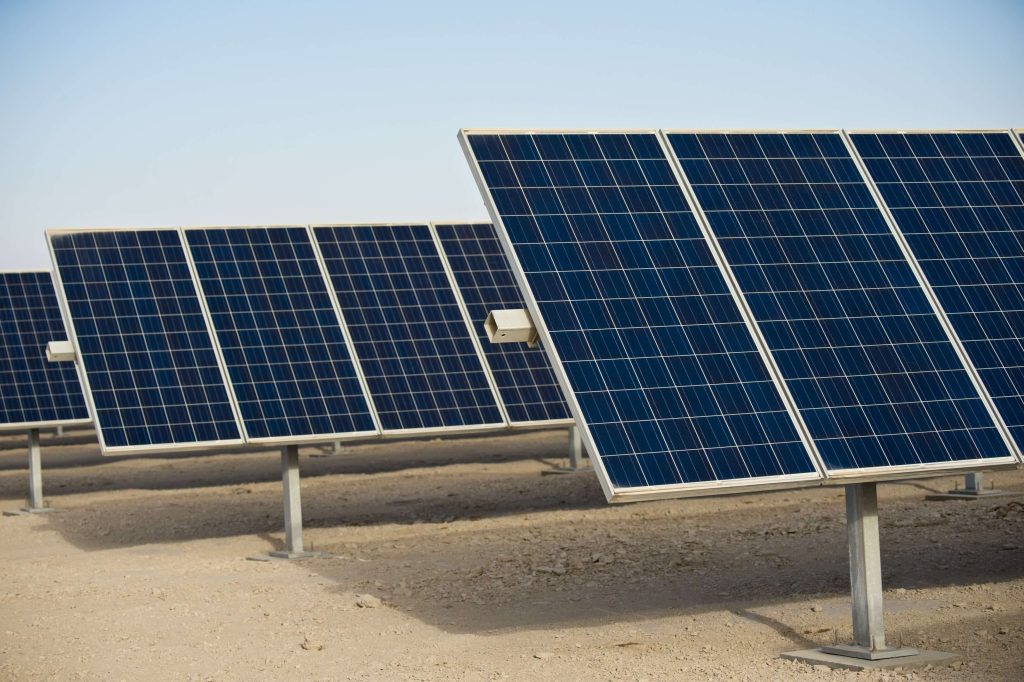
The funds along with other unique programs support low income rate assistance and conservation programs, as well as renewables research and development. New Brunswick’s law has included renewables in its definition of universal service which is an amazing and forward thinking approach.
“Universal service and energy conservation are “Policies, protections and services that help low-income customers to maintain electric service.
The term includes customer assistance programs; termination of service protection and policies and services that help low-income customers to reduce or manage energy consumption in a cost-effective manner, such as the low-income usage reduction programs, application of renewable resources and consumer education.”
What are the disadvantages and advantages of renewable energy?
Renewable energy has several advantages and disadvantages that are worth considering.
Advantages of Renewable Energy
Clean and Sustainable: Renewable energy sources such as solar, wind, hydro, geothermal, and biomass produce little to no emissions and are replenished naturally.
Energy Security: Renewable energy sources provide energy independence by reducing reliance on fossil fuels, which are finite resources and subject to price volatility and geopolitical tensions.
Cost-effective: Renewable energy has become increasingly competitive with conventional sources of energy, with costs continuing to decline. Additionally, renewable energy projects can be more resilient to price volatility compared to traditional energy sources.
Job Creation: The renewable energy industry creates many jobs, from manufacturing and installation to maintenance and operation.
Disadvantages of Renewable Energy:
Intermittency: Many renewable energy sources, such as solar and wind, are variable and can be affected by weather conditions. This means that energy production may not be consistent and reliable, requiring energy storage solutions or backup generation.
Land Use: Some renewable energy technologies, such as wind turbines and solar panels, require large land areas, which can impact wildlife habitats and natural landscapes.
Upfront Costs: Although renewable energy costs have declined, the upfront capital costs of building renewable energy infrastructure can be high. Additionally, there can be additional costs associated with integrating renewable energy into existing power grids.
Reliability and Infrastructure: As renewable energy sources are relatively new technologies, there may be a lack of infrastructure and expertise in some areas, which can limit their adoption.
Overall, the advantages and disadvantages of renewable energy depend on the specific technology and its application. Despite some challenges, renewable energy has significant potential to meet our energy needs in a sustainable and environmentally responsible way.
New Brunswick Weatherization Program
Weatherization is designed to reduce energy consumption in low-income households by installing conservation measures such as insulation, air sealing, weather stripping, and heating plant modifications, and through educating clients about energy consumption. The program also provides measures to make homes healthier and safer.
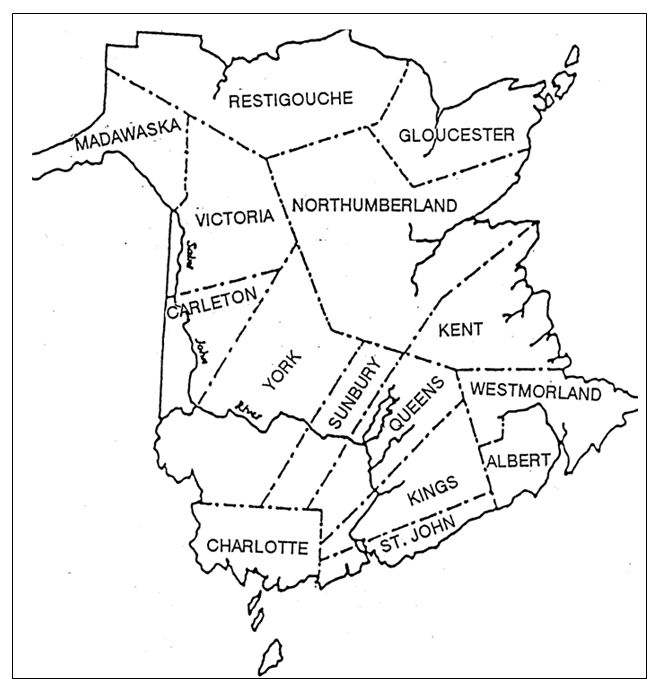
The New Brunswick Low-Income Renewables Pilot Program has provided many low-income households across the province with access to reliable, proven, cutting-edge renewable technologies. The technologies implemented in this program should not be directly compared to traditional weatherization efforts. The goal of this effort is to build an infrastructure now so that low-income households will have access to this technology in the future.
New Brunswick utilizes federal Weatherization Assistance Program Funds to support leveraging activities. The Leveraging Project assists community-based organizations in developing additional resources for sustainable/ renewable energy and energy efficiency improvements.
This encouragement of renewables development is based on a widespread perception, shared by many provinces and the federal government, that the time is right for renewables. The federal government has encouraged and funded renewables development through a variety of initiatives, including the Natural Resources Canada ( NRC). The NSC has pointed out that renewables can: reduce our country’s dependence on foreign oil, improve air quality, address climate-change concerns, expand international economic opportunities for Canadian energy-efficient and renewable-energy technologies, and save taxpayer dollars.
Solar Energy Installers in New Brunswick
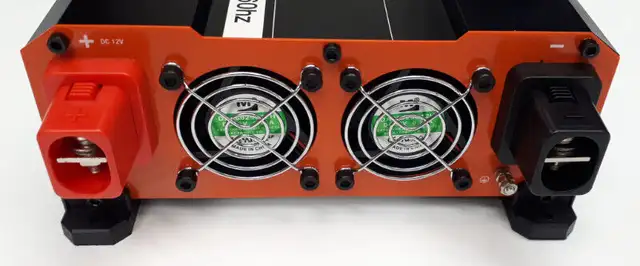
Solar water heating systems
Solar water heating systems utilize the “greenhouse effect” to collect the sun’s energy. Sunlight is transmitted through the collector glazing and absorbed by the materials behind the glazing. The thermal energy reradiated by these materials will not pass back out through the glass. The heat collected in a car with closed windows on a sunny day
is an example of the greenhouse effect. In addition to collectors, solar water heating systems also consist of storage tanks, piping, and usually electric pumps and controls.
There are three types of collectors used in solar water heating systems: flat-plate, evacuated-tube, and concentrating. A flat-plate collector, the most common type, is an insulated, weatherproofed box containing a dark absorber plate under one or more transparent or translucent covers. While most commercially available solar water heaters utilize a second well-insulated storage tank, a few systems can utilize existing hot water tanks.
Solar water heating systems are seldom designed to provide 100 percent of the home’s hot water demand. A 50 percent to 60 percent solar fraction may prove most cost effective in most of Canada.
Types of Solar Water Heaters
Solar water heaters can be classified as active or passive, direct or indirect. An active system uses an electric pump to circulate the heat-transfer fluid; a passive system relies on natural convection for fluid circulation. The amount of hot water a solar water heater produces depends on the type and size of the system, the amount of sun available at the site, proper installation, and the tilt angle and orientation of the collectors.
Passive systems are feasible in warmer climates or for three season operation, but are generally not feasible for year-round operation in most of Canada. A direct system circulates household (potable) water through the collector loop. Direct water heating systems should not be used where the water is extremely hard or acidic to avoid scale deposits or corrosion.
An indirect (closed-loop) system uses a heat-transfer fluid (water or diluted antifreeze for example) to collect heat and a heat exchanger to transfer the heat to household water. For more information on the types, costs, and economic benefits of solar water heaters.
Maintenance and Durability
The anticipated useful lifetime of the solar hot water system is expected to be at least 20 years. Six major manufacturers and installers provided this information. This survey was
conducted in 2019. The following table outlines the components and their expected lifetimes.
Application History
Based on our research, solar water heating is not only low maintenance but is also highly reliable. An average install solar water heating system on a home will likely require only
two maintenance over its life span:
1) the pump needed to be replaced but was readily available at a local hardware store, and
2) the glycol needed to be changed. Solar water system can provide 100 percent of a family’s domestic hot water requirements.
Smart Solar Set Up
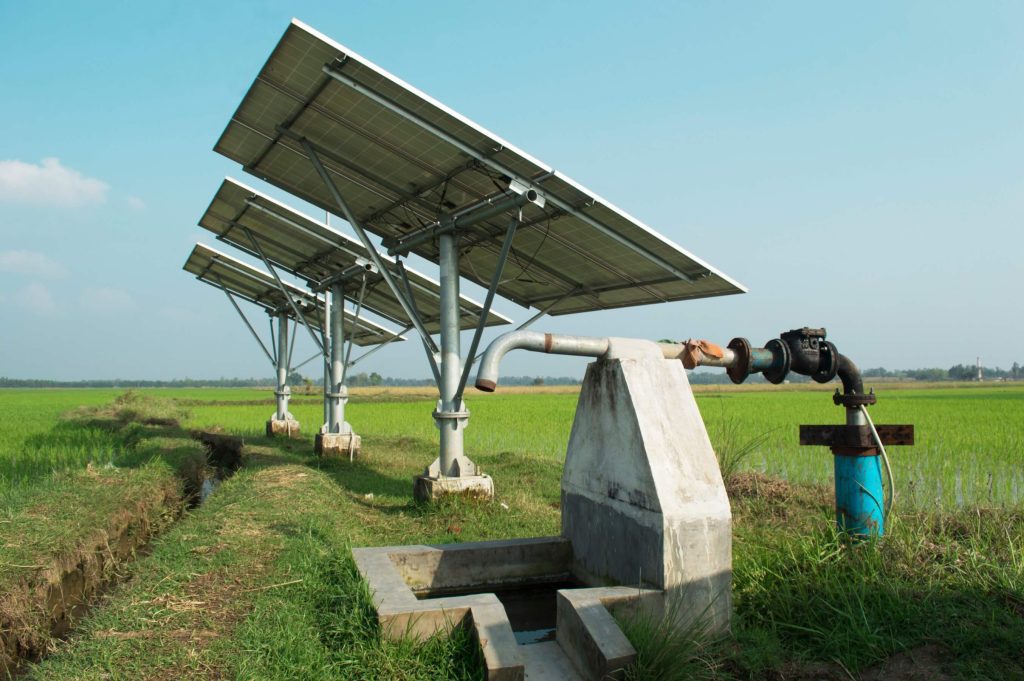
Photovoltaics
Photovoltaic (PV) technology converts sunlight directly into electricity (voltage). PV cells, constructed of semiconducting materials, measure about 4 inches square and produce about 1 watt of power. Grouping cells together in a module creates a power source capable of lighting a small light bulb. To generate even more power, modules can be grouped together in arrays which, when combined with the “balance of system (BOS)” components, comprise a system.
The BOS typically includes electrical switches, diode protection circuits, Direct Current-to-Alternating Current inverters for interfacing the PV output with the electrical load, and a small battery system if needed. Small PV systems can be used to supply part or all of a home’s electrical needs.
Systems are available for stand-alone applications – often with batteries to store power for later use or for grid-connected applications. In the latter case, the home uses the grid essentially as storage, though some grid-connected systems employ a small battery back-up in the event utility power is not available.
Net Metering
Instead of having a solar electric system independent of the utility grid, a system can be designed to work with the grid. Net metering allows homeowners to reduce their electric bills by generating power using small-scale solar energy systems. Under a net metering arrangement, homeowners who use solar systems run their electric meter backwards as they feed extra electricity back to their utility.
Net metering requires only a standard user-friendly interconnection with the utility and provides a simple constant rate for excess power. This allows homeowners to obtain the benefits of solar energy regardless of whether they are using electricity at the same time their system is generating power.
A specially designed utility-interactive inverter is needed. The solar array is connected to the inverter, as are the utility lines. The output is connected to the normal distribution box for the house. During the day, power is generated at the array and fed into the inverter, to be changed into AC power. If that power is needed in the home, it is passed on.
If the load demand is less than what the array is producing, the excess is fed into the utility grid system, and energy is credited to the home. If more power is needed in the home than the array can produce at a particular moment, then power flows from the utility grid to add to the array power. Typically there are no batteries in utility-interconnected systems,so at night all the power needed flows from the utility. When batteries are added it is to produce an uninterruptable power supply.
At the end of the month, if the customer uses more electricity than is generated, the customer pays the utility on the net kilowatt-hours used at the regular retail rate. If the customer generates more electricity than is used, the utility pays the customer for the net kilowatt-hours produced at the wholesale power rate.
How does a solar power inverter work?
A solar power inverter is an essential component of a solar energy system. Its main function is to convert the direct current (DC) electricity generated by solar panels into alternating current (AC) electricity, which is the type of electricity used in most homes and businesses.
Here’s a breakdown of how a solar power inverter works:
DC Electricity Generation: Solar panels generate electricity when sunlight falls on the photovoltaic cells, which are made of semiconducting materials like silicon. The panels are usually connected in series or parallel to produce the desired voltage and current levels.
Power Conditioning: The DC electricity produced by the solar panels is not suitable for direct use in most appliances and the power grid. It needs to be conditioned to match the characteristics of the AC electricity.
Conversion to AC: The solar power inverter receives the DC electricity from the solar panels and converts it into AC electricity. This conversion is achieved through a two-step process:
a. Inversion: The inverter uses electronic components, typically insulated gate bipolar transistors (IGBTs) or metal-oxide-semiconductor field-effect transistors (MOSFETs), to rapidly switch the DC electricity on and off. This switching creates a high-frequency AC waveform, usually in the range of a few kilohertz.
b. Filtering: The high-frequency AC waveform generated by the inverter undergoes filtering to smooth out the waveform and remove unwanted harmonics. This filtering process ensures that the AC output closely resembles the pure sine wave form required for most electrical devices.
Grid Connection: In grid-tied solar systems, the AC electricity produced by the inverter is sent to the main electrical panel of the building or directly to the utility grid. The inverter synchronizes the AC output with the grid frequency and voltage levels to ensure a safe and seamless integration of the solar energy into the existing power infrastructure.
Monitoring and Control: Modern solar power inverters often include advanced monitoring and control capabilities. They can provide real-time data on the solar energy production, system performance, and electrical parameters. Additionally, they may have built-in protection mechanisms to safeguard the system from overvoltage, overcurrent, and other electrical faults.
It’s important to note that there are different types of solar power inverters, including string inverters, microinverters, and power optimizers. Each type has its own advantages and considerations regarding system design, installation, and efficiency.
System sizing
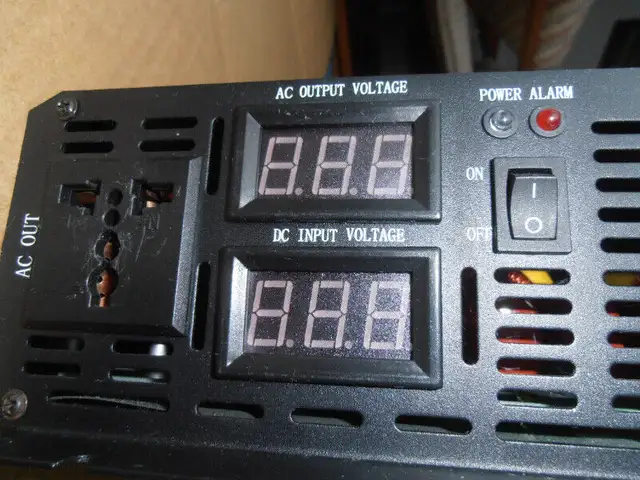
The size of a PV system needed to meet a desired electrical output depends on two key factors:
- Access to solar radiation
- The efficiency of the PV cells
PV systems should be positioned to maximize exposure to the sun, especially during the prime production time between 10:00 am and 3:00 PM. Even small shadows falling on a module will dramatically affect the amount of power produced. Most residential-scale systems involve fixed arrays mounted on rooftops to minimize installation and maintenance costs,but tracking systems to keep the array directed toward the sun are also available.
System Cost and Performance
Residential-scale PV systems are well proven. Presently, crystalline silicon and amorphous silicon are the PV materials used most often in residential applications. Each has its strengths and weaknesses, but most residential systems today use crystalline silicon. Many new developments such as new and improved PV materials will re-shape the technology in coming years, with one of the most promising being PV shingles, in which the PV technology is actually built into the home’s roofing.
Every effort should be made to use energy-efficient appliances and lights to reduce the electrical load, and thus, the overall system requirements. Once a system is installed, however,PV’s modularity means more modules can be added if needed.
Systems cost, like size, can vary dramatically depending on the amount of power required and the solar insolation available.
Because of the number of options available, buyers should explore several different companies to obtain size-specific estimates. Dealers should also be able to provide information about available financing opportunities.
Maintenance and Durability
PV systems are among the most durable and reliable renewable-energy technology in use today. PV modules have no moving parts, degrade very slowly, and offer a yet-to-be-determined lifespan which is expected to be measured in decades. Standard factory warranties are usually 10 years, with some manufacturers offering up to 20-year warranties.
Maintenance generally entails simply cleaning the modules.
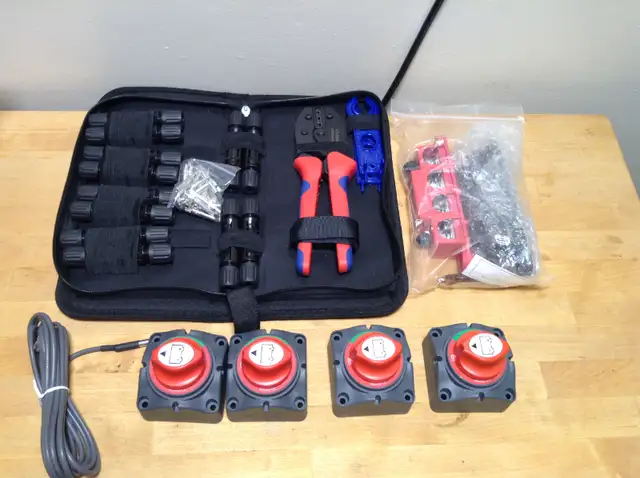
PV modules must be tested and certified both by Underwriter Labs (UL), which certifies the unit’s construction, and by a facility qualified to certify the unit’s performance. Among the concerns are how the system will react to strong wind gusts and other inclement weather, especially when mounted on a roof. To pass UL testing, modules must be able to withstand wind gusts of 120 m.p.h. (50 lbs/sq. ft.) and one-inch hail stones.
Design Tools
Performing a detailed load analysis will help the homeowner understand what appliances, lights, and other energy users are in the house and how much energy each uses. This analysis is one of the first steps toward designing a new PV system. In a recent publication issue, Home Power Magazine published an article titled “Doing a Load Analysis: The First Step in System Design,” which walks the installer through this process.
The installer can turn to the National Renewable Energy Laboratory’s solar insolation maps for help in assessing a site’s access to sunlight using various types of systems. Because of the many variables involved in properly sizing and installing PV systems, installers should work closely with a selected manufacturer to develop an appropriate system.
Software
SolarSizer software from power Queen is one option with emphasis is on stand-alone systems, not designed for utility-interactive applications.
The Ultimate Guide To Solar Energy https://t.co/1D2C2r1XhL
— Maple Garden Farm (@MapleGardenFarm) May 20, 2023
What is the latest development in renewable energy sources?
As of my last knowledge update in September 2021, there were several ongoing developments in renewable energy sources. While I don’t have access to real-time information, I can provide you with some notable advancements up to that point.
Here are a few:Solar Power:
Wind Power: Offshore wind farms have seen significant progress. Larger and more efficient wind turbines have been developed, capable of harnessing stronger winds at sea. Floating wind turbines are also being explored, which could enable wind energy generation in deeper waters.
Energy Storage:Advancements in energy storage technologies are crucial for balancing the intermittent nature of renewable energy sources. Lithium-ion batteries dominate the market, but research is focused on improving their performance, durability, and reducing costs. Additionally, emerging technologies like flow batteries, solid-state batteries, and hydrogen storage systems are being explored for larger-scale energy storage.
Tidal and Wave Power: Tidal and wave energy technologies are still in the early stages of development. Various designs, such as oscillating water columns and tidal turbines, are being tested and optimized for efficient conversion of oceanic energy into electricity.
Geothermal Energy: Enhanced Geothermal Systems (EGS) aim to tap into the Earth’s heat at greater depths and wider geographical locations, expanding the potential for geothermal energy. Research and development efforts are focused on techniques to create and maintain fractures in the rock for better heat extraction.
Bioenergy: Bioenergy continues to evolve with advancements in biofuel production, such as the development of advanced biofuels derived from non-food sources, including algae and agricultural waste. Additionally, research is focused on improving the efficiency of bioenergy processes and reducing associated environmental impacts.
It’s important to note that renewable energy is a rapidly evolving field, and new developments and breakthroughs are likely to have occurred since my last update. For the most up-to-date information, I recommend consulting recent scientific literature, industry reports, and news sources dedicated to renewable energy.
The role of renewable energy sources, such as solar and wind power, in mitigating climate change and reducing greenhouse gas emissions, and the potential for a transition to a low-carbon economy?
Renewable energy sources, including solar and wind power, play a crucial role in mitigating climate change and reducing greenhouse gas emissions. Here’s a discussion on their significance and the potential for a transition to a low-carbon economy:Climate Change Mitigation: The burning of fossil fuels for energy production is a significant contributor to greenhouse gas emissions, which are the primary drivers of climate change. Renewable energy sources offer a cleaner alternative by harnessing natural resources such as sunlight and wind, producing electricity without emitting carbon dioxide or other harmful pollutants. By replacing fossil fuel-based power generation with renewable energy, we can significantly reduce our carbon footprint and mitigate climate change.
Greenhouse Gas Reduction: Solar and wind power generate electricity without relying on fossil fuels, which helps to reduce greenhouse gas emissions. Solar energy converts sunlight into electricity using photovoltaic cells, while wind energy harnesses the power of wind to rotate turbines and produce electricity. Both sources have virtually no direct emissions during operation, unlike coal or natural gas power plants that release large amounts of CO2 and other pollutants. By increasing the share of renewable energy in the global energy mix, we can effectively reduce greenhouse gas emissions and curb the pace of climate change.
Energy Transition and Decentralization: Transitioning to renewable energy sources requires a shift from centralized energy systems, typically based on fossil fuel power plants, to decentralized systems. Solar panels and wind turbines can be installed at various scales, from individual households to large-scale power plants, allowing for distributed energy generation. This transition empowers communities, reduces dependence on finite resources, and increases energy security by diversifying the energy mix.
Economic Opportunities: The transition to a low-carbon economy presents significant economic opportunities. Renewable energy industries have experienced rapid growth, leading to job creation, technological innovation, and economic development. Investments in renewable energy projects stimulate local economies, promote sustainable development, and provide long-term benefits by reducing the costs associated with environmental damage and climate change impacts.
Energy Independence and Resilience: Investing in renewable energy sources helps reduce dependence on imported fossil fuels, enhancing energy independence for countries. Solar and wind power can be harnessed domestically, utilizing local resources and reducing vulnerability to geopolitical tensions and price fluctuations in fossil fuel markets. Moreover, renewable energy systems are often more resilient to extreme weather events, such as hurricanes or floods, compared to centralized fossil fuel infrastructure.
Technological Advancements: Continued investments in renewable energy research and development are driving technological advancements, making solar and wind power more efficient, affordable, and accessible. Improvements in energy storage systems, such as batteries, are addressing the intermittent nature of renewable energy sources and increasing their reliability. These advancements further contribute to the feasibility and scalability of renewable energy systems.
International Cooperation and Policies: Addressing climate change and transitioning to a low-carbon economy require global collaboration and supportive policies. Many countries have set renewable energy targets, implemented feed-in tariffs, tax incentives, and other mechanisms to promote renewable energy deployment. International agreements like the Paris Agreement aim to limit global temperature rise and encourage the adoption of renewable energy. Collaboration between governments, businesses, and civil society is essential to accelerate the renewable energy transition.
While renewable energy sources have made significant progress in recent years, there are still challenges to overcome, such as intermittency, grid integration, and initial investment costs. However, with the growing urgency to combat climate change, the continued advancement of renewable energy technologies, and supportive policies, the transition to a low-carbon economy powered by solar, wind, and other renewable sources is becoming increasingly feasible and necessary for a sustainable future.
Energy Efficiency Tips
Whether for your home or business, learning how easy it is to save money on your utility bill by obtaining a free energy audit to integrating clean energy alternatives such as geothermal. As new federal and provincial mandates work to phase out standard bulbs, discover lighting alternatives for your business.
Understand the process of developing an effective Energy Strategic Plan and the savings that can follow its execution.
Joint blog Post by Chrystale Henry and Zilu Zhang at Maple Garden Farm – a off the grid humble Organic Farm (permaculture ) located on a 10 acre farm producing varieties of vegetables and other farm produce. Joint us on twitter, Facebook and follow our LinkedIn company page to learn more and get great tips on farming strategy and permaculture and alternative energy design ideas.


